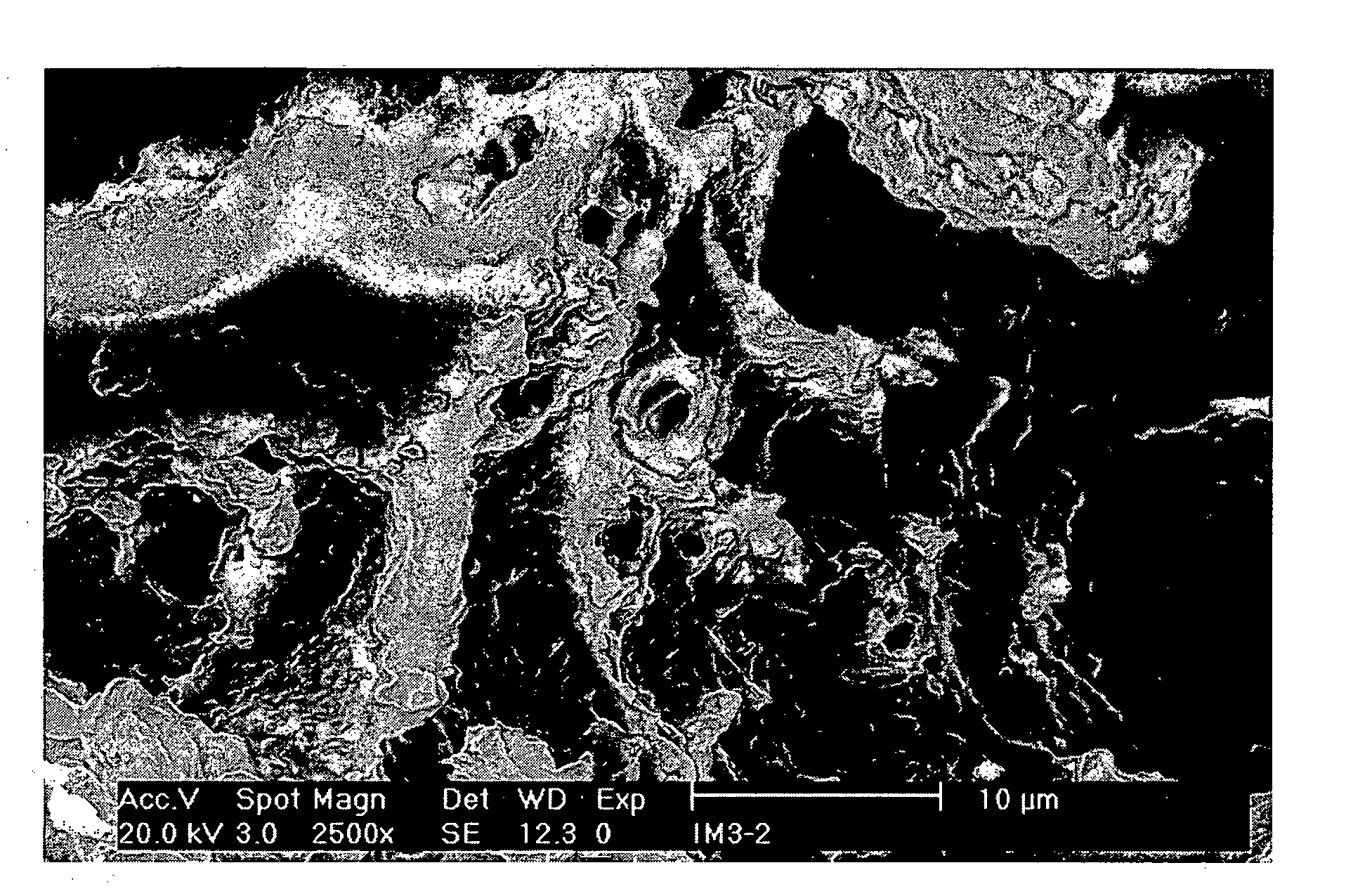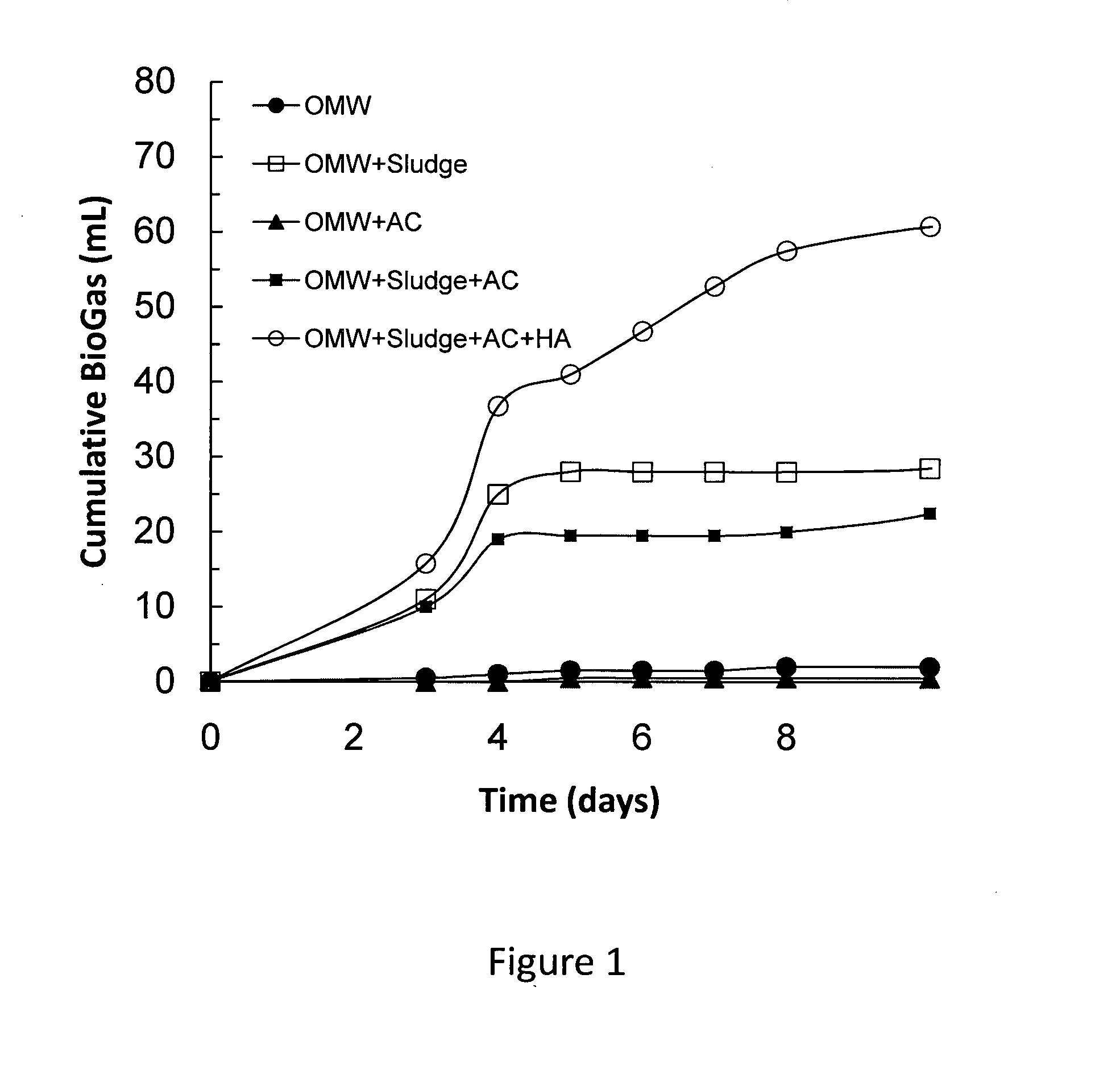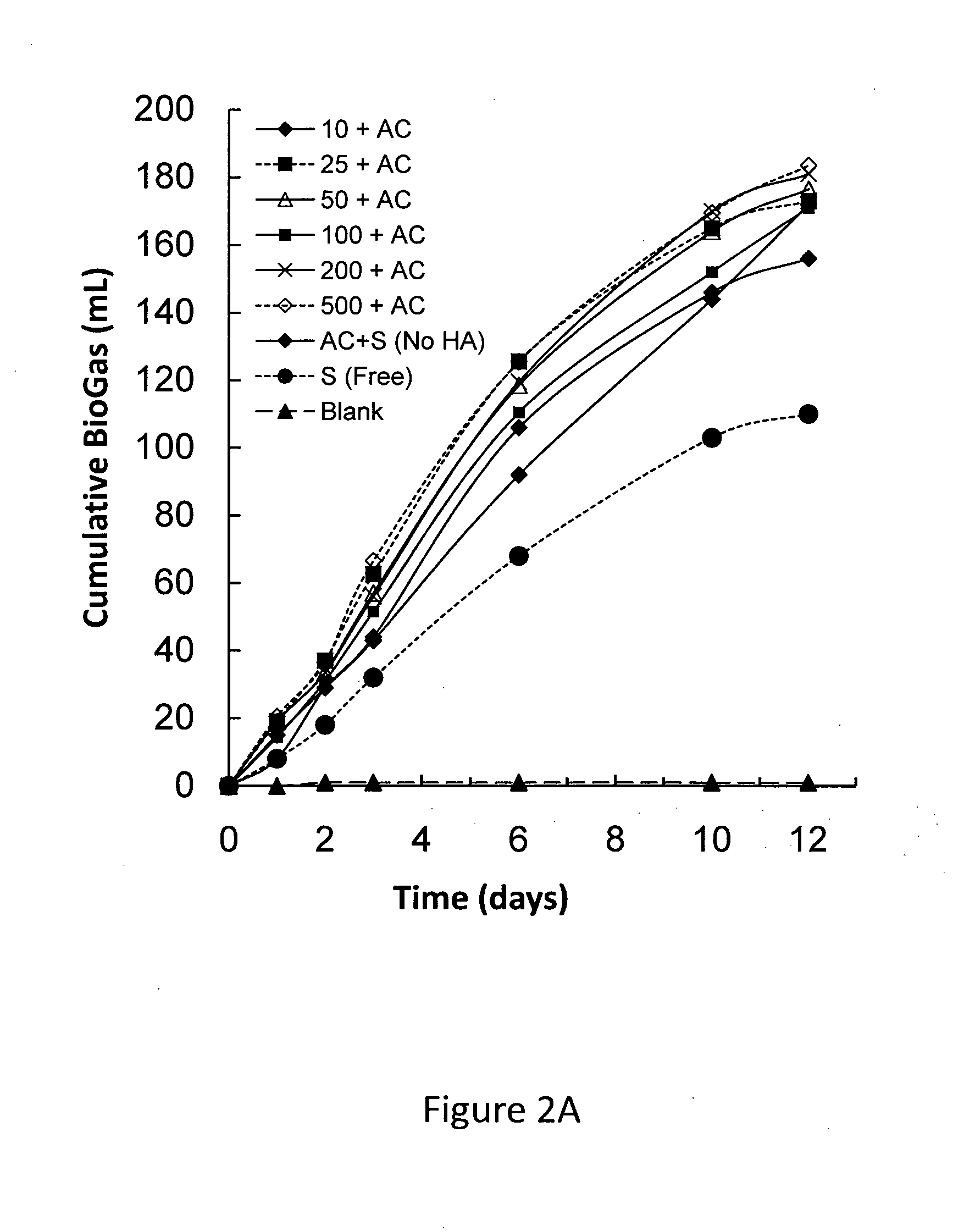Compositions of matter and uses thereof in the treatment of waste materials
a technology of waste materials and compositions, applied in the field of compositions of matter for treating waste materials, can solve the problems of long and slow process, large amount of waste, and severe ecological problems, and achieve the effect of stable and stable anaerobic treatment systems
- Summary
- Abstract
- Description
- Claims
- Application Information
AI Technical Summary
Benefits of technology
Problems solved by technology
Method used
Image
Examples
example 1
Preparation of HA Adsorbed onto PAC
[0153]Various samples of HA were prepared as follows: 0.005-0.5 g of HA were dissolved in few drops of 0.1 N NaOH. Subsequently, water was added to reach a final concentration of HA of 25-12000 mg / L. The pH of the resulted solution was adjusted to 7.0 by HCl followed by addition of 3 g of powdered activated carbon (PAC). The suspension of 100 mL was shaken for 30 minutes followed by centrifugation. The solid was separated by decantation of the liquid phase.
example 2
Biogas Production from Waste Material
[0154]HA-PAC obtained as in Example 1 was used in the production of biogas from olive mill wastewater under anaerobic condition as follows: 1 g of wet granulated sludge (biomass) from anaerobic extended granular sludge system (EGSB) treating paper mill wastewater was used.
[0155]0.05-1 gr of the HA-PAC were added to the sludge and gently mixed for several minutes. Subsequently, the mixture was added to olive mill wastewater (either 10 mL or 20 mL), diluted with water at a 1:1 ratio and optionally in the presence of glucose medium solution. The pH of the resulting mixture was adjusted to pH 7.0 (±0.1) and the mixture was placed in a 100 ml syringe and incubated at 37?C for 7-12 days. The biogas produced was monitored daily. At the end of the incubation period, the various samples were centrifuged and a liquid sample was taken from the supernatant for chemical oxygen demand, pH, polyphenols and volatile fatty acids (VFA) analysis.
[0156]The compositi...
example 3
Preparation of Compositions of Matter for Recycling Purposes
[0161]The samples used in FIG. 2A were re-used as follows: at the end of each biogas production experiment of each sample the OMW left was decanted and COD analyzed. The composition of matter was filtered on a small net and additional amount of OMW was added to each sample. A second run of biogas production experiment was conducted.
[0162]FIG. 2B illustrates the effect of humic acid concentration (aqueous concentration in ppm prior to mixing with activated carbon) on biogas production as observed with recycled / reused compositions of matter. It is noted that increase in the biogas production rate and quantity under the same experimental conditions was observed with recycled compositions of matter. Typically, an increase of 40-80% in the gas production in comparison with free biomass was observed with highest performance observed with the highest concentration of HA.
PUM
 Login to View More
Login to View More Abstract
Description
Claims
Application Information
 Login to View More
Login to View More - R&D
- Intellectual Property
- Life Sciences
- Materials
- Tech Scout
- Unparalleled Data Quality
- Higher Quality Content
- 60% Fewer Hallucinations
Browse by: Latest US Patents, China's latest patents, Technical Efficacy Thesaurus, Application Domain, Technology Topic, Popular Technical Reports.
© 2025 PatSnap. All rights reserved.Legal|Privacy policy|Modern Slavery Act Transparency Statement|Sitemap|About US| Contact US: help@patsnap.com



